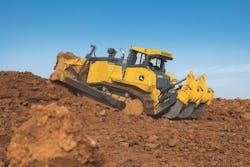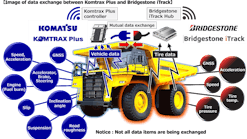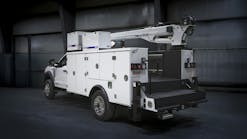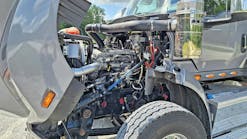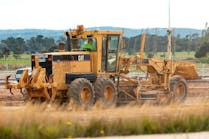Construction Equipment asked John Deere’s solutions marketing manager for roadbuilding Matt Goedert how equipment managers can cut operating costs on large, high-production dozers.
Four ways to cut dozer costs
- Undercarriage maintenance: When it comes to getting the most life out of the undercarriage, we can’t overlook the fundamentals. First is track tension. Maintaining proper track tension is an important controllable factor in undercarriage life. A tight track greatly increases component stresses and increases wear rates; however, running the tracks too loose will also reduce the life of the undercarriage components and cause uneven wear on the sprockets.
Tracks should be adjusted to the proper amount of sag; this procedure is shown on every John Deere dozer located on the periodic maintenance chart decal.
Track tension should be monitored regularly, especially when soil conditions change. Increased soil moisture, for example, can cause packing in the sprockets and a tighter track. It’s important to make sure your machine is properly configured for the application. In this example, recessed sprocket segments and track shoes with trapezoidal holes would be beneficial in getting more life out of the undercarriage because both options help reduce packing of material and allow a path for material to escape. - Keep the undercarriage clean: Another thing that can be done onsite that reduces operator costs is keeping the undercarriage clean. If working in a material that hardens as it dries out or freezes, cleaning the undercarriage daily will prevent the increased wear that occurs with the additional contact points.
Daily visual inspections of the entire undercarriage are helpful to identify any unusual component issues or unusual wear indicators. Undercarriage wear inspections on a regular interval allow planning for repair or replacement and are proactive actions that lead to better control of the overall costs of maintenance. - Proper operation: It’s also important to remember that how the machine is operated has a direct effect on undercarriage wear.
High-speed and reverse travel both have an adverse effect on the undercarriage, and it’s the same for turning under heavy loads, always turning one direction, or continually working slopes in the same direction. It is important to teach new operators that every machine movement needs to have a purpose to be efficient and keep operating costs down. - Hard surfacing: When working in abrasive materials, hard surfacing the wear points on the machine should be another important consideration.
In these environments, it’s recommended to operate the machine for a few days, and visually inspect where the paint is worn off. This gives you a good indication of the parts of the machine experiencing wear, such as the push beams, blade edges, cheek plates, and ripper shanks. Laying beads of weld or adding additional steel along these wear areas to prevent premature replacements can also greatly lower operating costs.
